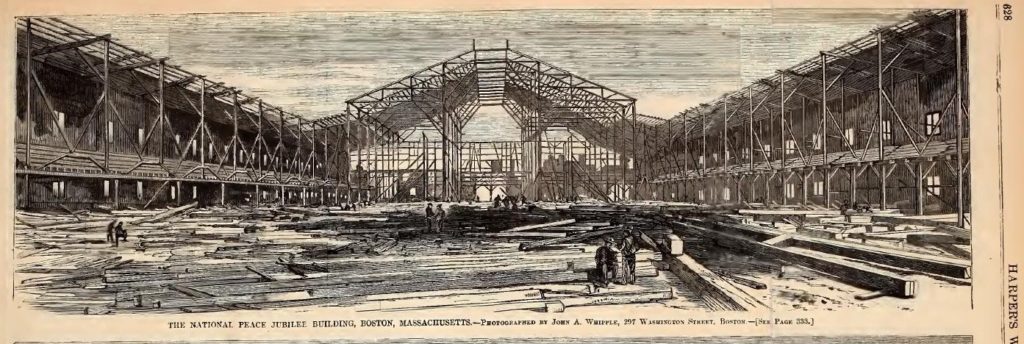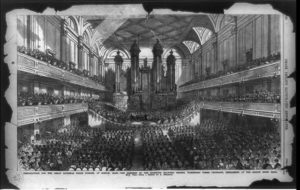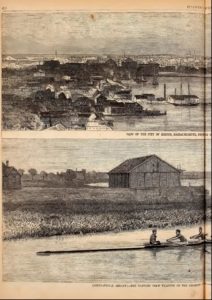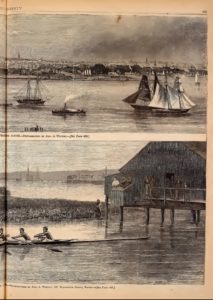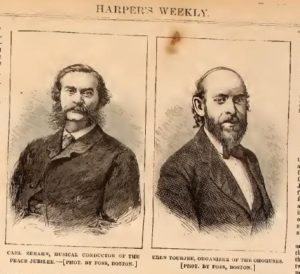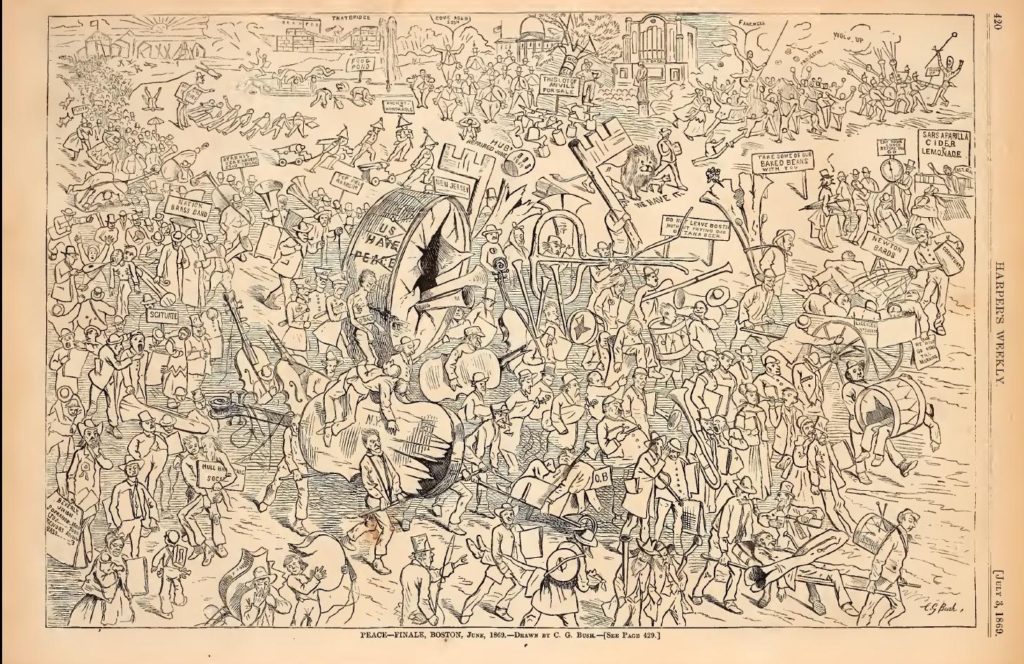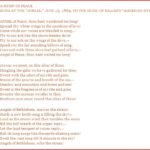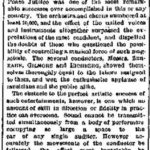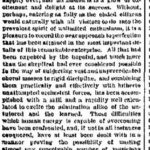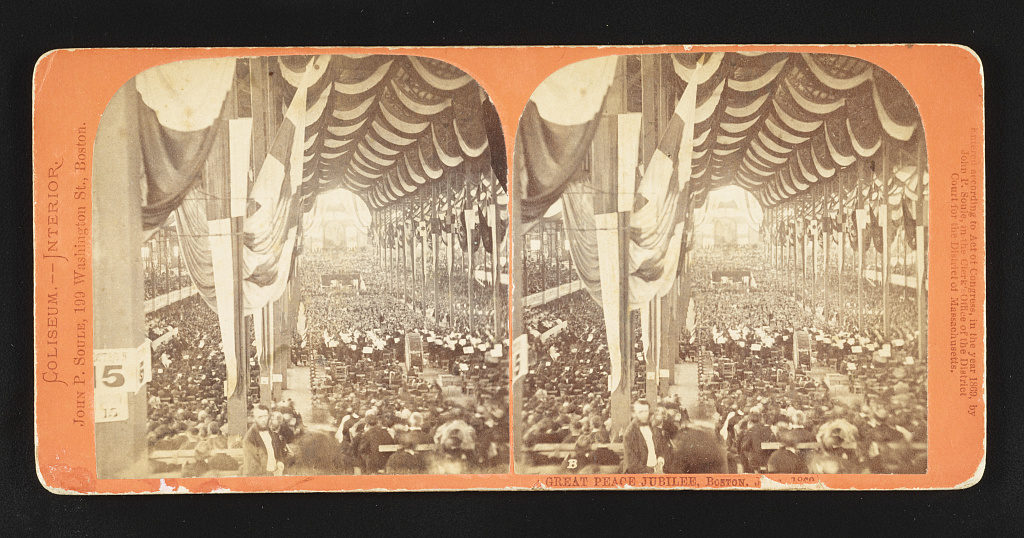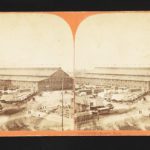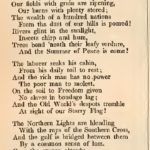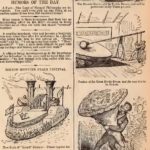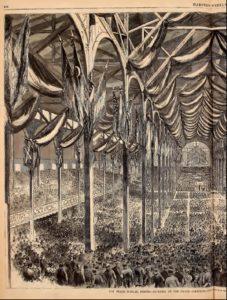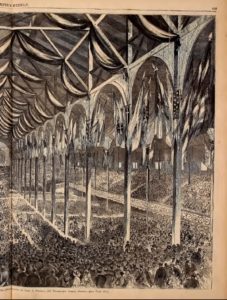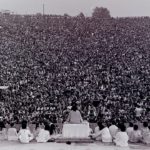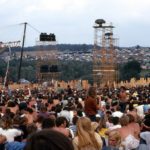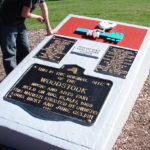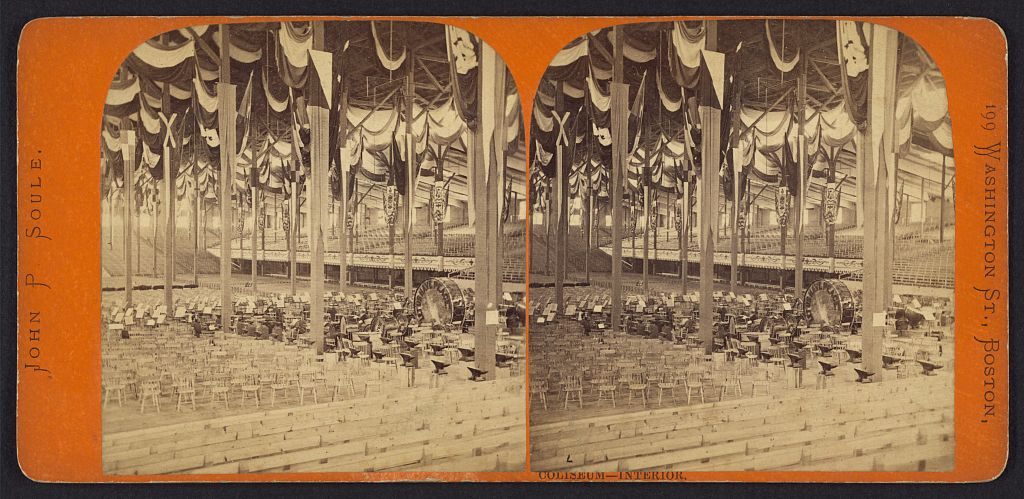150 years ago this week a National Peace Jubilee was held in Boston, Massachusetts at the Coliseum, a temporary structure built especially for the Jubilee. In its May 22, 1869 issue Harper’s Weekly anticipated the big event:
THE NATIONAL PEACE JUBILEE BUILDING, BOSTON.
OUR illustration of this building on page 328 shows its present condition. The musical festival for which it is being constructed will be held in Boston next June, beginning on the 15th, and lasting during [f]ive days. The Coliseum, as this building is called, has been roofed, and the labor of finishing and decorating the interior has been commenced. Over twenty-seven thousand dollars have been subscribed in advance for tickets of admission. Arrangements have been made for the comfortable shelter of the thousands of strangers who are expected to visit Boston during the Jubilee week.
Messrs. E. & G.G. HOOK, organ builders, of Boston, have contracted to furnish a large and powerful organ for the Coliseum, to be used at the National Peace Jubilee. It is intended that the instrument shall be one of such strength and power as shall sustain the vast chorus and orchestra, and fill the building with sound. The great chorus, the largest the world has ever seen, is now full, and the orchestral ranks are rapidly filling up, The superintendent of the chorus, Mr. E. TOURJEE, has found it necessary to issue a circular stating that no more choral organizations can be accepted, and that societies already accepted must make no more additions to their numbers. OLIVER WENDELL HOLMES, it is said, is to write a hymn to be sung by the grand chorus.
Harper’s Weekly’s coverage of the Jubilee in its July 3, 1869 issue also covered the city of Boston:
BOSTON AND THE PEACE JUBILEE.
WE publish this week several illustrations connected with Boston, to which attention has lately been attracted by the mammoth Jubilee. Not the least interesting of these is the photographic view of the city reproduced in our double-page cut.
__________________________
[The paper reviewed Boston’s history from its founding in 1630. “In the opening scenes of the Revolution Boston took a more prominent part than any city in the Colonies.” Boston developed commercial ties all over the world; it had a world class harbor.]
Boston has made more noise than any city in the Union. It is the first article of the creed of Boston thinkers that that city is the centre of human civilization – that Boston is the “hub of the Universe.” Now that she has had the biggest concert of all history – we refer to the recent Musical Jubilee – she will henceforth consider herself as the centre of “music of the spheres.” We expected to hear the “anvil chorus” in New York, but were disappointed. Still, the Jubilee was a great success. The programme was carried out without difficulty. The rendering of the symphonies and the oratorio music was excellent, and the grand chorus was a remarkable success. We give portraits on this page of CARL ZERAHN, conductor of the symphony and oratorio music, and also of EBEN TOURJEE, the organizer of the choruses.
In connection with this Jubilee one thing is noticeable – and that is the death which occurred on the 17th. In the ancient theatres, where over 30,000 were assembled, both births and deaths were of frequent occurrence. It is not wonderful, therefore, that in an assemblage of sixty thousand there should have been a single death.
Well, the Jubilee is over. It is now a part of the history of noise-making Boston. Our artist, Mr. BUSH, has on page 420 illustrated the finale of the whole affair.
According to front pages of The New-York Times President Grant (“Let us have peace” was part of his Republican presidential nomination acceptance letter in 1868) attended the Jubilee, I think on the second day, and then visited a couple other Massachusetts cities – Worcester and Springfield – before returning to the White House. According to shmoop Oliver Wendell Holmes, Sr. did write a poem for the festival. A Hymn of Peace was performed on the first day, set to Matthias Keller’s “American Hymn.”
__________________________
In its coverage Harper’s Weekly included another poem, apparently recited on the first day. This one was written by Susan J. Adams and began with the quote from Abraham Lincoln about “the mystic cords of memory” and “the better angels of our nature.” For the poet “The Northern Lights are blending With the rays of the Southern Cross” “And the Summer of Peace is come!”
_______________________________________
The shmoop link alludes to it. 100 years later another monster musical festival was held. It was also dedicated to peace, and whatever structures were needed were also temporary. But the 1969 show wasn’t performed in an urban setting – it was held on a 600 acre dairy farm in New York State. Although there was a lot of music spread over three or four days, somehow I don’t think the Anvil Chorus featured prominently. According to Wikipedia, in an audience of over 400,000 there were two births, two deaths, and four miscarriages during Woodstock.

